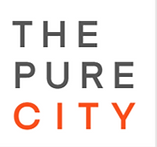D-VERSE
VENTURES
Blue MetaDomain
The Ocean — Earth’s largest and most vital ecosystem — remains largely invisible, unmeasured, uncertified, and unprotected. The Blue MetaDomain (BMD) applies the MetaDomain© infrastructure to the Ocean, transforming it into a source of certified, measurable, and actionable value.
BMD enables the full embodiment of the Ocean’s dynamic interactions with other ecosystems — including space, climate, human developments. It reframes the Ocean as an active, sentient system capable of balancing short- and long-term dynamics, local and global priorities, and becoming a driver of planetary sustainability and regenerative development.
Why It Matters
• Creates synergy with distributed AI systems via shared cognitive architectures and real-time feedback loops
• Acts as an accelerator of ocean intelligence, transforming governance and de-risking systemic investment
• Redefines sustainability as a source of generative value — not constraint
• Enables fluid interaction between knowledge, ecosystems, and capital
The Opportunity
Estimated generative value of the oceanic system: $30–40 trillion per year
Certified tokenization unlocks access to capital, intelligence, and impact at planetary scale
Funding & Next Steps
BMD is actively fundraising to scale development, deploy pilot programs, and build strategic institutional integrations.
Discover key reflections and perspectives on the Blue MetaDomain:
watch the short video series here.
DEVELOPMENTS
Metadomain
MetaDomain© is a dynamic digital infrastructure designed to transform the latent potential of ecosystems into intelligent, liquid, and generative entities.
It leverages an enactive cognition model, moving beyond traditional observer-observed paradigms, enabling systems to perceive, respond, and evolve as self-aware, co-creative actors within their environment.
Key Differentiators of MetaDomain vs Traditional Governance
MetaDomain
1. Power Structure & Architecture
Distributed network (structural decentralization)
Integrated collective and machine intelligence
Interoperability across heterogeneous domains (e.g., ocean-space)
2. Decision-Making & Coordination
Adaptive, algorithmic governance (real-time, data-driven)
Dynamic systems based on situated awareness
Self-regulation with continuous inter-domain feedback
3. Operational Goals & Values
Systemic common good (balancing ecology, economy, and culture)
Radical transparency, real-time traceability, and accountability
Co-evolution of technology, ecosystems, and communities
Traditional Governance (Public/Private)
Centralized, top-down hierarchies
Human-led decisions with minimal technological support
Organizational silos and isolated expertise
Planned, cyclical decisions—often slow
Fixed rules, compliance, and bureaucracy
Command-control and external auditing
Profit-driven (private) or electoral-driven (public)
Opacity, delayed reporting, and formal accountability
Linear, segmented development models
Summary of What Sets MetaDomain Apart
• Radical decentralization with networked, rather than hierarchical, coordination
• Augmented intelligence through human-algorithm collaboration
• Living systems design, transcending efficiency and control paradigms
• Continuous feedback and adaptive governance, not locked into static cycles
• Native transparency and traceability, beyond regulatory compliance
C-School©
The C-School© (School of Connection) is based on a new awareness of knowledge, outcome of developments in neuroscience and cognition sciences: an idea of knowledge as situated and impermanent, not universal and stable. It redefines learning as a central process of the global ecosystem: generator of sense and creator of reality.
The C-School is itself an open and non-deterministic ecosystem, a prototype of organizations, in which knowledge is generated by redundancy and diversity.
It connects minds and cultures in a cognitive hub, from which to bring out drivers of change, involving social rules and behaviors, and with them values and weights of economy.
The C-School practice of "connection", nourished through its multi-layer geography, is mediator of cultures, catalyst and accelerator of ideas and resources, capable of provoking the emergence of unexpected identities, new markets, attractors, rituals and behaviors.
The C-School plays a strategic role for the Third Mission of universities (see Partnerships), through the development of a C-School as a pole with multiple academic locations, which acts as a catalyst for paths at the frontier of knowledge.
PARTNERSHIPS
“The Transition Institute” is a partnership between the Municipality of Genoa, the University of Genoa and Diotima Society. It is a permanent systemic design laboratory, oriented to the goals of the city of Genoa in terms of sustainability and innovation , under the "GENOA PURE CITY” manifesto.
TTI - Via Francesco Vivaldi 5, 16126 Genova
mailto: tti@diotimasociety.org
The Pure City concept captures the current convergence of science, politics and finance towards greater sustainability. The strategy is based on the connection of different vertical projects in ecosystems capable of triggering circular and expansive development processes.

Diotima Society has entered into an agreement with CRUI (Conferenza dei Rettori delle Università Italiane) for the adoption of the C-School in the Third Mission of the universities, and subsequently a series of framework agreements with various universities have been implemented: Bari, Genova, Molise, Piemonte Orientale.

A Technological Partnership for Cognitive Infrastructure
NATAM is our strategic technological partner dedicated to enabling next-generation cognitive ecosystems. By combining advanced digital technologies such as AI and blockchain, NATAM supports secure, adaptive and intelligent interfaces that foster interaction, learning, and value creation across diverse domains.



